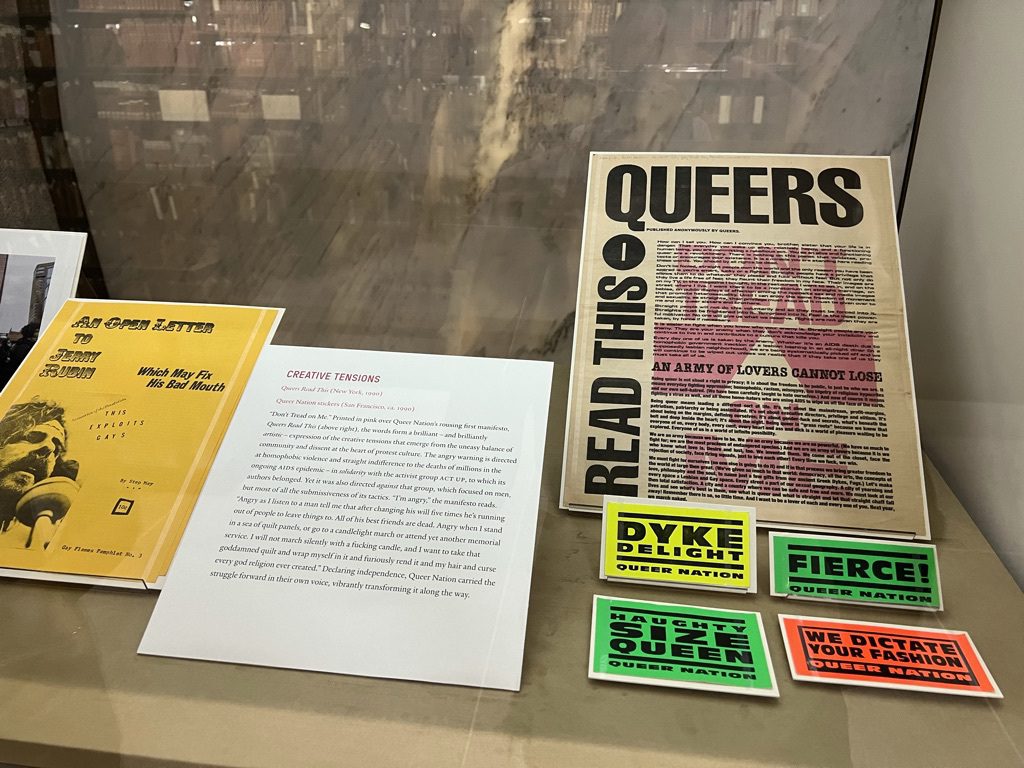Fall exhibit at the Beinecke Library explores art and protest
The new “Art, Protest, and the Archives” exhibit at the Beinecke offers a vibrant look into the visuals of resistance throughout history.

Hudson Warm, Contributing Photographer
The Beinecke Rare Book and Manuscript Library’s newest exhibit, “Art, Protest, and the Archives,” probes the relationship and tensions between aesthetics and dissent.
The exhibit premiered on Aug. 4 and will run through January. The first floor offers a chronological look at protest art over time, while the work upstairs is arranged by topic. Kevin Repp, a curator at the Beinecke, worked with other museum staff to create an exhibition that covers a vast geographical and temporal span.
“A lot of these stories are not known,” Repp said.
Most of Repp’s experience lies in European work from the latter half of the 20th century, but with this exhibit, he said he was interested in combining his area of expertise with more contemporary art.
Repp wanted to highlight the Black Lives Matter protests in 2020 and other more recent protest movements as a way of sparking a conversation on art and protest more directly focused around current events.
He added that he thinks the exhibit carries a modern relevance as well as a great deal of material that could inspire both creative and academic responses from visitors.
Repp seeks to show that creative activism is about more than just making posters.
“It’s body, and performativity, and music, and all different kinds of creative expression. The show at least tries to allude to those,” he said.
Repp told the News that the featured pieces are designed to evoke a number of reactions, saying that some are beautiful, some are shocking and all seek to “get dialogue going.”
Students who visited the exhibit said that they appreciated the diversity of works displayed.
“I’m impressed by the amount of artwork the curators have put together and the way they put it together to make a story,” Ndiana Akpan ’27 said.
Downstairs, one can find photographs from 2020 protests after former Minneapolis police officer Derek Chauvin murdered George Floyd. On the second floor, a layout from the French zine “Parapluie” about rock festivals and counterculture is positioned beside a magazine about the Italian Festival of the Young Proletariat.
Out of the entire exhibit, Repp said his favorite piece is a Milanese magazine spread from the early 1970s. The magazine is shaped like a joint and depicts a montage of photos. The photos show Karl Marx’s face pasted atop the famous Marianne silhouette, all laid over a purple background. There is a text article, titled “La Rivoluzione Sotterranea,” or, in English, “Underground Revolution,” across the top.
The piece inspired Repp, he said, to learn Italian at 50 years old.
Samantha Saenz ’27 enjoyed the range of artistic forms included in the exhibit.
“It’s interesting to see how art and protest intertwine, and how that’s changed over time,” she said.
Michael Morand, the director of community engagement at the Beinecke Library, said that an important purpose of this exhibit, and of the Beinecke Library as a whole, is to “unite the past with the present, for the future.”
Repp acknowledged the complexities in his work — most of the art exhibited was meant to be displayed in streets and train stations, not in fine institutions. Repp grappled with these questions while working on the exhibit, as he has wondered if this material should even be displayed in the Beinecke and whether art is genuinely a viable way to make the world a better place.
The exhibition is on view in the Beinecke until Jan. 7, 2024.







